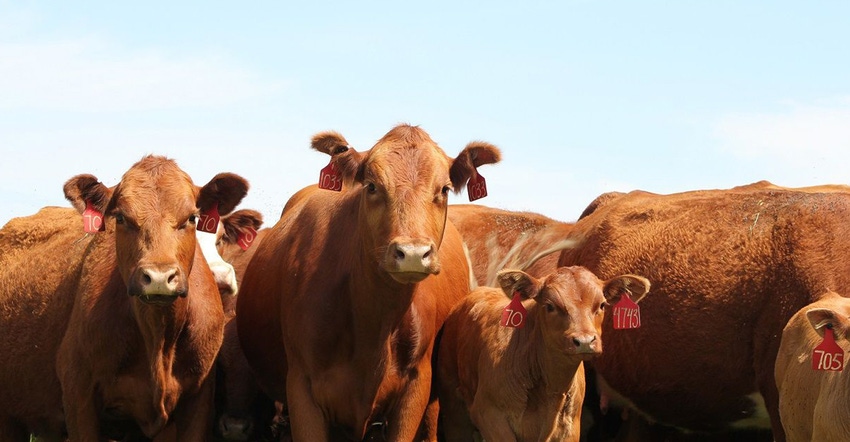Increase stocking rates by feeding pairs grazing bromegrass
In parts of Nebraska short on pasture for summer grazing, ethanol coproducts mixed with low-quality forage can be a viable strategy to increase stocking rate.
May 10, 2017

By Aaron Berger
Short on pasture? Consider feeding a mixture of ethanol coproducts with low-quality forage to replace grazed forage and increase stocking rates for cow-calf pairs grazing smooth brome pastures.
Areas in Nebraska where pastures dominated by smooth brome are the primary resource for summer grazing are also where harvested cornstalk residue and ethanol coproducts are readily available. These locations tend to be limited in pasture.
Recent research at the University of Nebraska-Lincoln examined feeding ethanol coproducts mixed with low-quality forage to cow-calf pairs on smooth brome pasture to replace grazed forage.
This study occurred over a three-year period at the Agricultural Research and Development Center near Mead from 2011 to 2013. Pastures were grazed from early May until mid-September annually. The study consisted of two treatments. The first treatment stocked cow-calf pairs that grazed an estimated 3.82 animal unit month (AUM) equivalents of forage per acre during the grazing season without any substitution feed provided. (This is the recommended stocking rate for this location.) An AUM is equivalent to about 780 pounds of air-dried forage.
The second treatment was double the recommended stocking rate at 7.63 AUM equivalents of forage demand per acre. A mixture of modified distillers grain with solubles and ground cornstalks was provided daily and fed at a rate designed to replace about 50% of the grazed forage, thus allowing for the doubling of the recommended stocking rate. The mixture consisted of 30% modified distillers grain with solubles and 70% ground cornstalks on a dry matter basis.
The cow-calf pairs fed the mix were provided 0.6% of their body weight on a dry matter basis daily at the start of the grazing season. Increasing levels of this feed mix were fed throughout the grazing season to account for declining forage quality and quantity, as well as the increasing consumption by the calf. Pairs were group-fed once a day in metal bunks that provided 3 feet of bunk space per pair.
Benefits of coproducts with forage:
• No statistical difference in cow and calf body weight between the two treatments at the end of the grazing season occurred, although cows and calves receiving the feed mix tended to weigh more than ones only grazing smooth brome pastures.
• The pastures in this study received the same treatments for four consecutive years, and little difference was observed visually in condition or residual forage at the end of the grazing season each year between treatments.
• Supplemented pairs were provided on average 15.7 pounds on a dry matter basis of the feed mix per day. This was estimated to reduce their intake of grazed forage by 37%. One pound of the feed mix replaced 0.94 pound of grazed forage.
• Feeding a significant level of fibrous, low-quality forage with the ethanol coproducts is necessary to reduce dry matter intake of grazed forage. As shown in other studies, feeding only highly digestible ethanol coproducts would likely not have resulted in the same "grass saving" effect.
Results from this study would indicate that feeding a combination of ethanol coproducts mixed with low-quality forage to cow-calf pairs grazing smooth brome pasture at levels estimated to replace 50% of the diet can effectively replace grazed forage. This management practice provides the opportunity to increase the number of cow-calf pairs that can be placed in a smooth brome pasture for the summer grazing season by replacing a portion of grazed forage with fed feed.
For more information on this study, see the 2015 Nebraska Beef Cattle Report Supplementing Cow-calf Pairs Grazing Smooth Bromegrass.
Berger is a Nebraska Extension educator. This research was conducted by Jason Warner, Annie Doerr, both former graduate students in the Animal Science Department at UNL; Galen Erickson, UNL animal science professor; Rick Rasby, Extension beef specialist; and Terry Klopfenstein, animal science professor. This report comes from UNL BeefWatch.
You May Also Like



